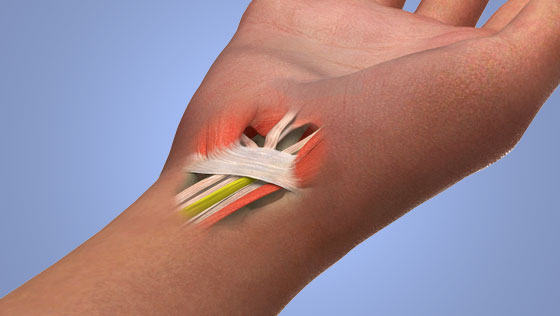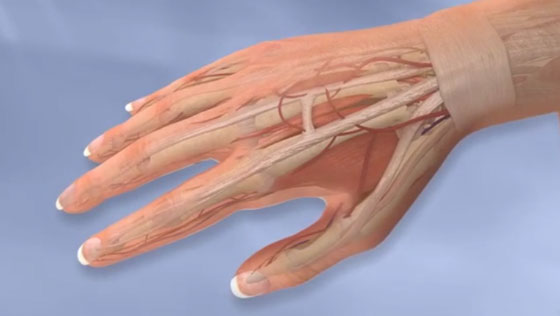What is Trigger Finger Release?
Trigger finger release (also known as A1 pulley release) is a surgical procedure performed to treat trigger finger, a condition that occurs when one of the tendons responsible for bending a finger cannot glide smoothly in the sheath around it.
Key statistics about Trigger Finger Release
- 2.6% of the general population are affected by trigger finger[1]
- Up to 10% of diabetics are affected by trigger finger[1]
- Women are much more likely to be affected by trigger finger and the condition most often occurs in their dominant hand[2]
- The ring finger is the digit most commonly affected by trigger finger[3]
- More than 94% of individuals who undergo trigger finger release experience satisfactory results[3]
Anatomy
The flexor tendons are bands of tissue that connect the muscles of the forearm to the finger and thumb bones. Contraction of the forearm muscles causes these tendons to flex the fingers and thumb.
Each of the flexor tendons is surrounded by a lubricated tendon sheath that allows the tendons to glide smoothly as the fingers flex and extend.
Annular pulleys are bands of tissue along the tendons sheaths that anchor the tendons and sheaths to the finger bones. Annular pulleys are numbered A1 through A5.

Why is Trigger Finger Release performed?
Trigger finger release is performed to alleviate symptoms associated with trigger finger (also known as stenosing tenosynovitis). Trigger finger occurs when the tendon sheath becomes inflamed and the flexor tendon develops a nodule at the A1 pulley. This causes the tendon to catch as it passes through the sheath when the finger bends. Trigger finger can affect any finger, but most commonly occurs in the ring finger and thumb, when it is called trigger thumb.
Trigger finger can vary in severity and duration, and trigger finger release may be recommended for individuals who experience pain, swelling, joint stiffness, or the finger remaining locked in a bent position.

Who needs Trigger Finger Release?
Trigger finger is a common hand condition among adults between the ages of 40 and 60 and occurs more frequently in women than in men. Repetitive strong gripping is often the underlying cause of the condition. Individuals with diabetes, gout, kidney disease, and rheumatoid arthritis have a higher risk of developing trigger finger.
Individuals with trigger finger who experience pain and dysfunction that has not responded to nonsurgical treatment may undergo trigger finger release.
How is Trigger Finger Release performed?
- The surgeon will make a small incision and access the affected A1 pulley.
- The A1 pulley is carefully cut.
- The affected flexor tendons are examined and tested to make sure that they glide smoothly as the finger bends.
- Finally, the incision is closed using sutures.
What are the risks of Trigger Finger Release?
It is uncommon to experience complications from trigger finger release but potential risks may include:
- Infection
- Bleeding
- Nerve damage
- Finger stiffness
How long does it take to recover from Trigger Finger Release?
-
24 hours after surgery
Most patients are able to return home the same day as their procedure. Pain medication may be prescribed and the affected hand should be iced and elevated. -
2 weeks after surgery
Any non-dissolvable sutures are removed and bruising and swelling begin to subside. -
6 weeks after surgery
Most patients can resume most daily activities. -
6 months after surgery
Most patients have fully recovered from trigger finger release.
What are the results of Trigger Finger Release?
Trigger finger release is a safe and effective procedure to alleviate the symptoms of trigger finger. Trigger finger release results in pain relief and symptom resolution with minimal complications, and has a high degree of patient satisfaction. More than 94% of individuals who undergo trigger finger release experience satisfactory results[3].
Find an Orthopedic Doctor in Your Area




